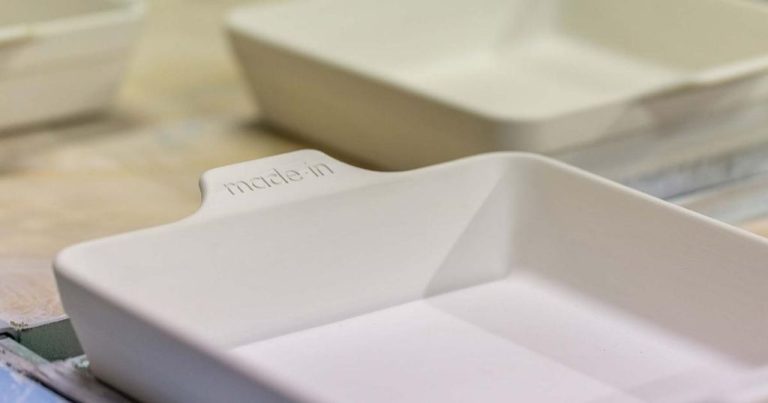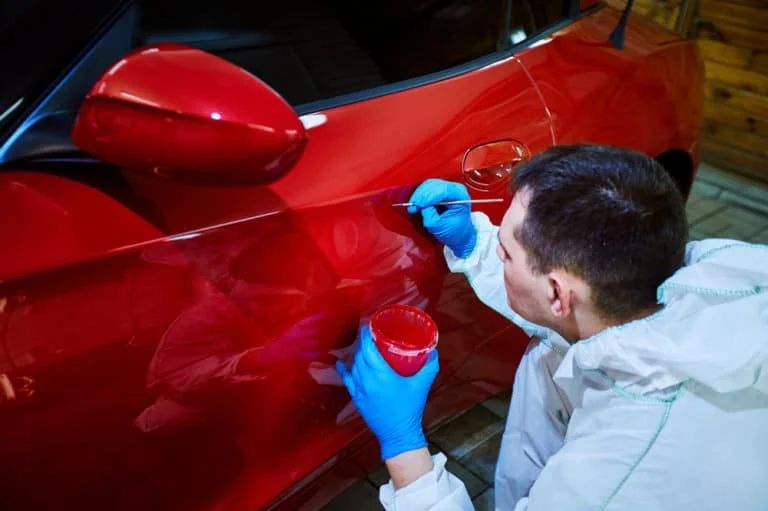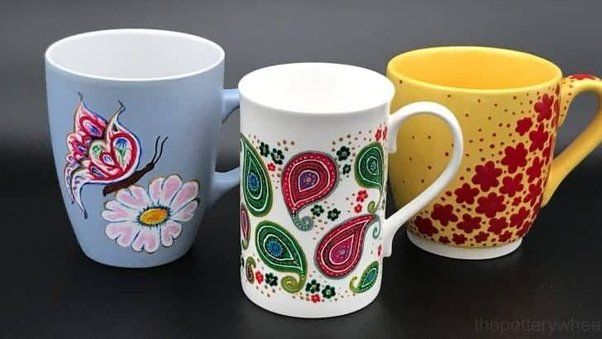What Is The Best Extruder For Polymer Clay?
Polymer clay extruders are tools used to push out and form consistent strings or shapes of polymer clay. They allow clay artists to quickly produce even lengths of clay for beads, canes, flattened sheets, and other polymer clay creations. Extruders provide consistency and save time compared to hand-rolling clay. They are commonly used in polymer clay work along with pasta machines and clay rollers.
There are several types of polymer clay extruders available, from simple hand-powered tools to more advanced motorized extruders. Key factors in choosing an extruder include cost, power source, capacity, and interchangeable nozzles. Extruders allow for greater efficiency, precision, and creativity with polymer clay. This article will provide an overview of the best extruder options for polymer clay artists.
Key Considerations
When selecting the best extruder for polymer clay, there are several key factors to consider:
Size/Capacity – Extruders come in a range of sizes and capacities. For small projects, a manual clay gun or small pasta machine may be sufficient. For larger volumes of clay, consider a larger screw-based extruder or heavy-duty pasta machine.
Power – Manual extruders require physical effort to operate. Powered options like pasta machines and screw extruders offer more consistent results with less effort. Evaluate if a manual or powered extruder better suits your needs.
Speed Control – The ability to adjust the extrusion speed allows for more precision and flexibility when working with clay. Screw extruders and some pasta machines offer variable speed control.
Price – Extruder prices range from under $20 for basic clay guns to several hundred dollars for heavy-duty screw extruders. Consider how frequently you use polymer clay and your budget when deciding.
Selecting an extruder that has the appropriate capacity, power, and controls for your needs and skill level will ensure good results when working with polymer clay.
Manual Extruders
Manual extruders are clay extruders that are operated by hand without any power source. They typically consist of a barrel with a plunger that is pushed down by hand to extrude the clay out of a die at the end.
Some pros of manual extruders include:
- They are very affordable, with basic models starting under $100 (https://www.amazon.com/Gdrasuya10-Extruder-4-Layer-Stainless-Ceramics/dp/B08X4NDF5N).
- They are simple to operate and maintain.
- Manual operation gives you more control over the speed and force of extrusion.
Some cons of manual extruders:
- Extruding large amounts of clay can be tiring on the hands and wrists.
- It’s harder to maintain a constant rate of extrusion compared to powered extruders.
- Limited pressure means some highly detailed dies may not fully express detail.
Overall, manual extruders provide an affordable option well-suited for small projects, test extruding, and hobbyists. Their simplicity and hands-on control are advantages, but potential hand fatigue and lack of power limit their utility for high-volume production.
Powered Extruders
Powered extruders use electricity to automate the extrusion process. The main types are pasta machines, clay gun extruders and screw-based extruders. Electric extruders allow you to extrude polymer clay quickly and uniformly with minimal physical effort. They are highly efficient for producing long strands or sheets.
The advantages of electric extruders include consistency, speed and reduction of strain on your hands and wrists. They save time and effort compared to manual extrusion. Powered extruders also allow you to control the thickness and shape of the extruded clay. Some models have adjustable dials to vary the output.
However, powered extruders do have some downsides. They are generally more expensive than manual options. Electric extruders can also overheat the clay if not used properly, leading to drying. They require an electrical outlet to operate. Care must be taken not to overwork the clay when using an electric extruder. Overall, powered extruders excel at quickly and evenly extruding polymer clay in large quantities or complex shapes.
Some popular electric extruder models include the Makin’s Ultimate Clay Extruder and the Lucy Clay CZEXTRUDER, which reviewers on sites like Amazon praise for their reliability and consistency (https://www.amazon.com/Best-Sellers-Clay-Extruders,-Mixers-Presses/zgbs/arts-crafts/12896471). The LC CZEXTRUDER from Lucy Clay is designed specifically for polymer clay use and offers superior durability (https://www.lucyclay.com/store/40-lc-czextruder).
Pasta Machines
One popular option for extruding polymer clay are pasta machines. Pasta machines allow you to roll out sheets of uniform thickness and also extrude the clay into strands (Source). Here are some of the pros and cons of using pasta machines as extruders for polymer clay:
Pros:
- Allow you to easily control the thickness of your clay sheets and strands
- Generally less expensive than dedicated clay extruders
- Easily available from craft stores or online retailers like Amazon
- Come in manual versions or electric versions for convenience
Cons:
- Can only extrude clay in short strands, not continuous like a dedicated extruder
- May require more physical effort with manual operation
- Clay can get stuck and jam the gears if not careful
- Strand size is limited to the pasta machine settings
Overall, pasta machines provide an affordable and accessible option for extruding polymer clay into sheets and strands. However, their functionality is limited compared to specialized clay extruders. Choosing between manual vs electric pasta machines depends on your budget and desired convenience.
Clay Gun Extruders
Clay gun extruders are handheld tools that allow you to push clay through interchangeable discs to create various shapes and textures. They work similarly to a caulking gun, with a trigger mechanism that advances a rod to push clay through the barrel and disc. Some key features of clay gun extruders include:
Clay gun extruders are very affordable, typically costing under $20. Models like the COMIART Clay Gun Extruder come with multiple discs for variety. The handheld design gives you precise control for detail work. They are also compact and portable.
On the downside, clay gun extruders require hand strength and stamina to squeeze the trigger. Powered options may be easier for extended use. The size of the barrel limits the amount of clay you can load at once. Clay can also get stuck inside the barrel, requiring occasional cleaning.
Overall, clay gun extruders are a budget-friendly option for small projects requiring hand extruded details and textures. Their simplicity and affordability make them accessible for beginners exploring the capabilities of polymer clay.
Screw-Based Extruders
Screw-based extruders use an Archimedean screw inside a barrel to force clay through a die. As the handle is turned, the screw pushes the clay forward and compresses it before forcing it through the die. This compression results in a continuous strand of evenly extruded clay.
Some of the top screw extruder models include:
- Makin’s Professional Ultimate Clay Extruder – Features a heavy duty steel screw and aluminum body. Can extrude thick strands and has 12 die options (https://www.amazon.com/Best-Sellers-Clay-Extruders,-Mixers-Presses/zgbs/arts-crafts/12896471).
- Staedtler Fimo Clay Extruder – An affordable plastic extruder good for beginners. Comes with 6 die options (https://thebluebottletree.com/czextruder-review-polymer-clay-extruder/).
- Czextruder – Made from food-safe plastic with a stainless steel screw. Includes drill adapter and 5 dies. Good for smooth, consistent extrusions (https://thebluebottletree.com/czextruder-review-polymer-clay-extruder/).
The screw design allows consistent, even pressure that’s ideal for delicate clay work. Models with included dies allow shaping clay into various widths and patterns.
Recommended Models
There are numerous extruders on the market for working with polymer clay, but some of the most popular and well-reviewed options include:
Makin’s Professional Ultimate Clay Extruder
The Makin’s extruder is designed specifically for polymer clay and offers versatility with interchangeable disks and a wide opening to handle soft or stiff clays. It has a heavy steel construction for durability and consistent pressure. Makin’s is a top choice for many polymer clay artists.
Lucy Clay CZextruder
The CZextruder features an aluminum body and steel gears for strength, along with adjustable pressure settings. It comes with multiple disks and is known for reliability when extruding lots of clay. It’s more expensive but built to last.
Walnut Hollow Claygun
For beginners, the budget-friendly Walnut Hollow Claygun is very accessible and easy to use. It has a simple hand-powered design but can still create thick extrusions. Many crafters keep using this even after upgrading to powered options.
Atlas Pasta Machine
Pasta machines like the heavy-duty Atlas provide a motorized option at lower cost. The roller spacing is adjustable for different thicknesses. Useful for sheets and coils rather than complex shapes.
Accessories
In addition to the main extruder unit, there are several useful accessories that can enhance your polymer clay extruding experience. Here are some of the most popular accessories:
Extruder discs – These discs attach to the end of the extruder barrel and have different shaped openings to create ropes, logs, and other customized extrusions. Popular sets include the Sculpey 19-piece disc set and the Makin’s Ultimate 21-piece extruder disc set. The discs allow you to make grass, fur, hair, and other textures.
Cutting blades – Blades that attach to the end of the extruder barrel let you slice extruded clay into uniform lengths. Some sets come with multiple blades for different cutting styles.
Extruder handles – Handles provide better grip and control when using a manual extruder. Some are simple bare handles, while others have measurement markings for consistency.
Disc storage books – These notebooks have slots to neatly organize all your extruder discs in one place for quick access. The Makin’s Extruder Disc Number Guide makes it easy to identify discs.
Stand – A stand can securely hold your extruder upright when not in use. This prevents damage and keeps work areas tidy.
Conclusion
When selecting the best extruder for polymer clay, the key factors to consider are your budget, the types of designs you want to create, and how frequently you plan to use the extruder. Manual extruders like clay guns offer affordability and portability but require more physical effort. Powered extruders allow you to extrude faster and easier but come at a higher price point. Pasta machines are a good mid-range option.
For most hobbyists, a clay gun or pasta machine should meet their needs. These will allow you to create a variety of extruded shapes and textures. Invest in a screw-based extruder if you need to produce large quantities or want the most professional results. Whichever type you choose, look for models made of metal for durability and accessories like different shaped disks to expand your design capabilities. Take proper care of your extruder and it should provide years of service.
In summary, consider your budget, project needs, and frequency of use when selecting the ideal extruder for working with polymer clay. Manual options provide an affordable starting point while powered extruders offer faster and higher volume extrusion for advanced users.






